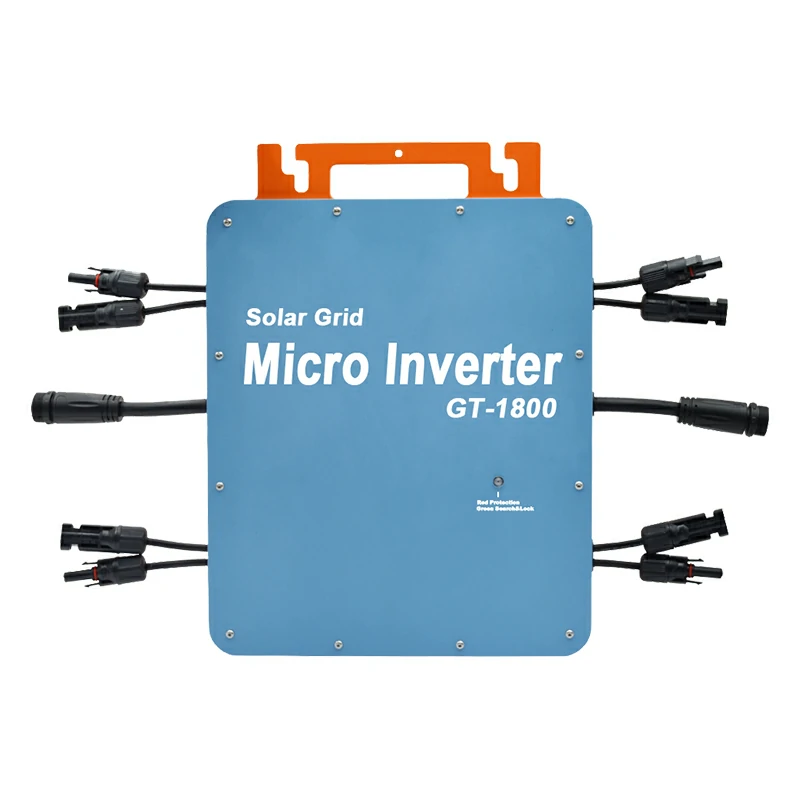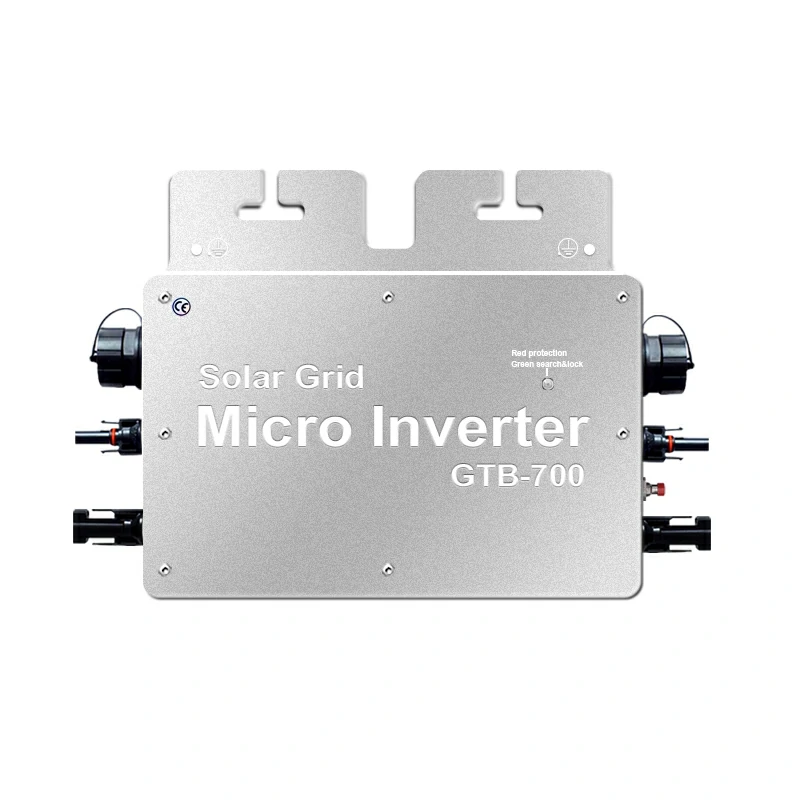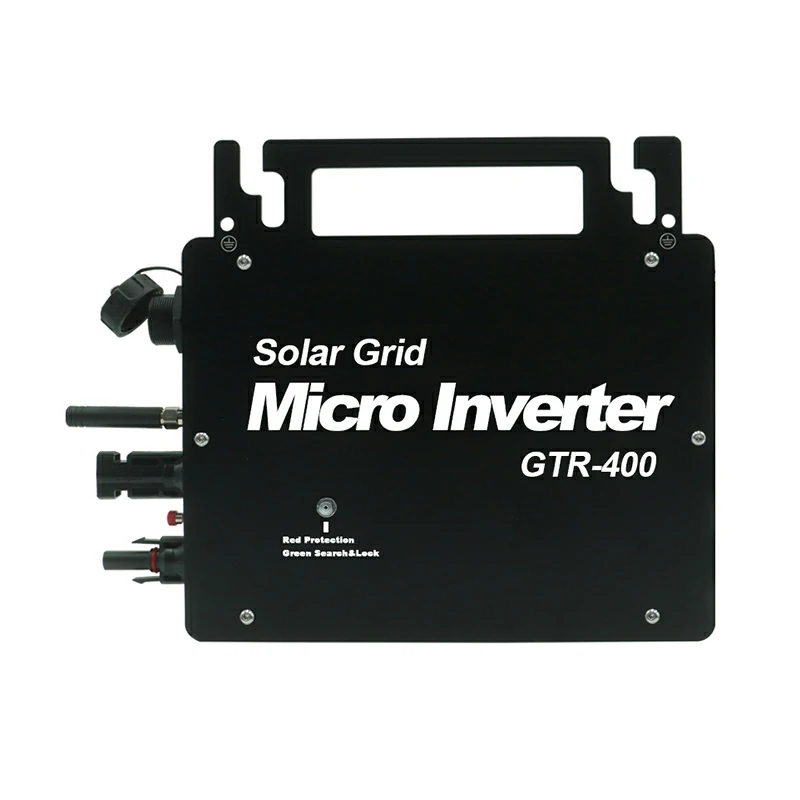Introduction
Grid-connected inverters are critical components of renewable energy systems, helping to regulate voltage and maintain stability. In this post, we will look at the intricacy of grid-connected inverters and their importance in ensuring dependable electricity distribution.

Basics of Grid-Connected Inverters
Grid-connected inverters are devices that convert the direct current (DC) produced by solar panels or wind turbines into alternating current (AC) that is compatible with the utility grid. There are two types of inverters: central and grid-connected micro-inverters. Central inverters are commonly utilized in large-scale installations, whilst micro-inverters are used in residential and small-scale systems. These inverters are supplied by specialized grid-connected inverter suppliers who guarantee their quality and compliance with grid regulations.
Voltage regulation: How grid-connected inverters maintain stable voltage levels
Voltage management is critical for keeping the grid stable and providing a continuous supply of electricity. Grid-connected inverters play an important part in this process by altering the voltage output to meet grid demands. This feature is especially significant in cases where renewable energy sources provide variability to the system.
Stability Improvement: The Role of Grid-Connected Inverters
Grid stability is critical to the efficient operation of the electrical grid, particularly in the face of intermittent renewable energy sources. Grid-connected inverters play an important role in improving stability via a variety of processes.
One important benefit of grid-connected inverters is their ability to reduce voltage swings and disruptions. By dynamically altering the output voltage in response to changes in load or generation, these inverters help to stabilize the grid and prevent power outages. Furthermore, advanced grid-connected inverters have capabilities like reactive power control and frequency regulation, which improve system stability.
Furthermore, grid-connected inverters enable the smooth integration of renewable energy sources into the grid. These inverters ensure seamless infusion of renewable energy by syncing their output with grid frequency and voltage, thereby reducing grid instability caused by intermittent generation.
Factors to Consider When Selecting Grid-Connected Inverters for Voltage Regulation and Stability
When choosing grid-connected inverters for voltage regulation and stability, numerous variables must be considered to ensure optimal performance and conformance with grid specifications.
Compatible with Grid Standards and Regulations
Grid-connected inverters must adhere to local grid standards and regulations to ensure a smooth integration with the existing infrastructure. It is critical to select inverters from reliable vendors who follow these requirements and offer grid-certified devices.
Inverter Capacity and Scalability
The capacity of grid-connected inverters should be determined by the installation’s unique requirements, taking into account factors such as system size and predicted demand unpredictability. Furthermore, scalability is critical for future system expansion or alterations, allowing for the easy integration of additional inverters as required.
Voltage control mechanisms are efficient and reliable
Grid-connected inverters’ voltage control techniques must be efficient and reliable. High-efficiency inverters reduce energy losses during conversion, which improves total system performance. Furthermore, reliability provides continuous functioning and good voltage regulation in a variety of situations.
Integration with Other Grid Management Systems
Grid-connected inverters should work seamlessly with other grid management systems, such as supervisory control and data acquisition (SCADA) and advanced metering infrastructure (AMI). This integration enables centralized monitoring and management of grid-connected inverters, allowing for real-time modifications to maintain voltage regulation and stability.
Case Studies: Success Stories for Grid-Connected Inverter Implementation
Real-world case studies provide useful information about the practical applications and advantages of grid-connected inverters in voltage regulation and stability.
Case Study #1: Application for Large-Scale Solar Farms
Grid-connected inverters are used on large-scale solar farms to transform the DC output from solar panels into AC electricity for grid injection. Grid-connected inverters provide smooth integration of solar energy into the grid by carefully controlling voltage levels and reactive power output, thereby reducing voltage fluctuations and ensuring stability. This case study demonstrates the scalability and dependability of grid-connected inverters used in utility-scale renewable energy projects.
Case Study #2: Integration in Residential Solar Installations
In home solar installations, grid-connected micro-inverters are critical for voltage management and panel stability. Micro-inverters optimize energy production by converting DC power from each solar panel directly at the source, minimizing losses due to shade or panel mismatch. This case study demonstrates the effectiveness of distributed grid-connected inverters in improving stability and increasing energy output in residential settings.
Lessons Learned and Benefits Realized
These case studies highlight the versatility and efficacy of grid-connected inverters in tackling voltage regulation and stability issues at various scales and applications. Stakeholders can gain significantly from using the capabilities of grid-connected inverters, such as improved grid resilience, increased renewable energy integration, and reduced environmental impact.
Conclusion
Grid-connected inverters are crucial to ensuring voltage regulation and stability in modern electrical grids. These inverters facilitate the smooth integration of renewable energy sources and contribute to overall grid dependability by utilizing advanced control algorithms and dynamic voltage regulation capabilities. Users can fully optimize their renewable energy systems and contribute to a more sustainable future by understanding the importance of selecting the right grid-connected inverter supplier and taking key factors such as compatibility, capacity, efficiency, and integration into account.
Stay tuned for further information on the expanding landscape of renewable energy technology and grid interconnection options.




